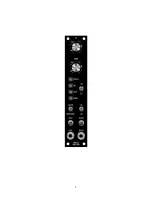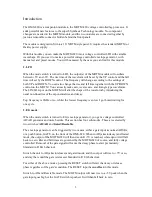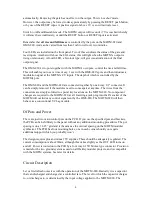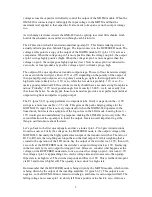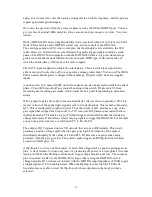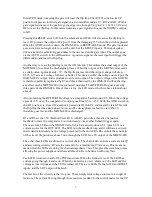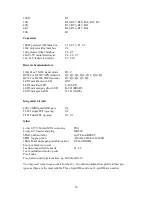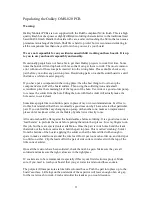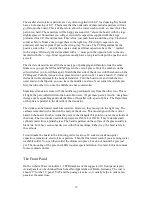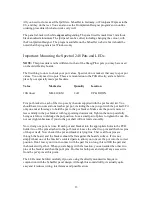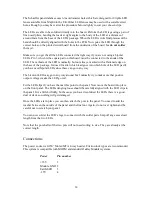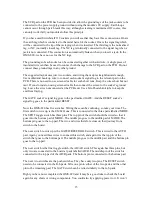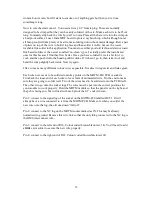
voltage across the capacitor will directly control the output of the MOTM module. When the
OMS-820 is connected up it will supply the input voltage to the MOTM and thus the
maximum level applied to that capacitor. It also needs to keep an eye on the output voltage
too.
As with many electronic circuits the OMS-820 can be split up in several little chunks. Grab
hold of the schematic now and let’s run through each bit in turn.
The LFO section is that bit centred around dual op-amp U1. This bizarre looking circuit is
actually called a precision Schmitt Trigger. The input comes in to the BUFFERED node. The
voltage at this point is a copy of the output of the MOTM module. U1 (pins 1,2,3) acts as a
comparator. When the voltage on pin 3 is more positive than the voltage on pin 2, the output
at pin 1 swings highly positive (high). When the voltage at pin 3 is more negative than the
voltage on pin 2, the output goes highly negative (low). Now because pin 2 is connected to
zero volts, or local ground, any positive voltage at pin 3 will make pin go high.
The output of the op-amp drives a transistor output stage. This set of four transistors simply
act as a switch that will give 15V or -15V depending on the polarity of the output of
the op-amp. Op-amp outputs can’t, in general, actually go right to their supply rails. So the
high state is more likely to be +13V or so, while the low state is probably -13V or so. To
make a good symmetrical LFO waveform we really should have a accurate swing from plus to
minus. ‘Probably’ +13V is not good enough. I want exactly 15.00V... well, not exactly, but
the closer the better. So simply put, those four transistors provide a near perfect symmetrical
output swing from an imperfect op-amp output.
The U1 (pins 5,6,7) op-amp performs two important jobs. Firstly it steps down the +/-15V
swings to a more reas/-7.5 volts. This gives us the peak charging voltage for the
MOTM-820’s input. This is not very important for when the MOTM-820 operates in the
linear mode, but it sets the asymptote of the log curves in the LOG mode. Leaving this at +/-
15V would give an unsatisfactory log response, making the LIN/LOG pot do very little. The
second function of the op-amp is to invert the output. Inversion is all important to get the
thing to oscillate, more about this later.
Let’s go back to the first op-amp again, and have a look at pin 3. Pin 3 gets its instructions
from two sources. Firstly the voltage on the BUFFERED node, ie. the output voltage of the
MOTM-820. Secondly, the highly symmetrical output of the transistor switcher. The ratio of
R12 to R13 sets the weighting each input has on the final output. It is this weighting that is
crucial to the operation of the LFO mode. Say the output of the switcher is at -15V, then with
zero volts at the BUFFERED node, the switcher’s output will stay stuck at -15V. Its staying
in the low state by its own output forcing pin 3 low. However, consider what happens as the
voltage on the BUFFERED node starts to rise, so does the voltage on pin 3. At 5V,
the voltage at pin 3 is approaching zero. As the voltage rises and crosses zero, the op-amp
flips state to its high level. The switcher responds and flies to +15V. This is fed back into pin 3
via R13 and forces it higher still. The op-amp is now stuck in a high state.
But remember that the BUFFERED node is being driven by the MOTM module, which in turn
is being driven by the output of the inverting amplifier, U1 (pins 5,6,7). This output is now
negative, so the MOTM-820 now forced to discharge, and hence its own output will fall. The
falling voltage now causes pin 3 to slowly fall from a positive value back to zero. And once
5
Summary of Contents for MOTM-820
Page 2: ...2...


